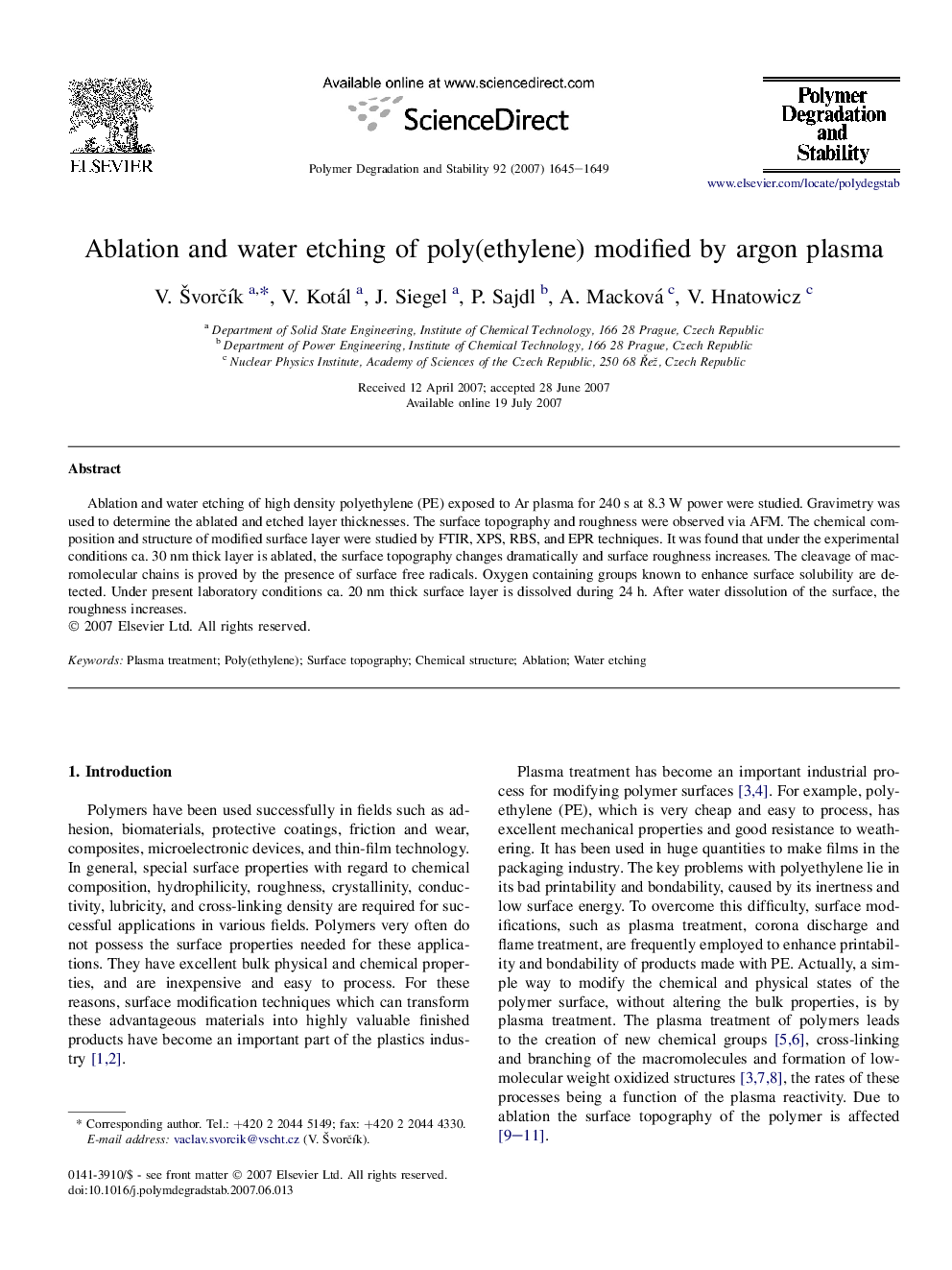| Article ID | Journal | Published Year | Pages | File Type |
|---|---|---|---|---|
| 5204989 | Polymer Degradation and Stability | 2007 | 5 Pages |
Ablation and water etching of high density polyethylene (PE) exposed to Ar plasma for 240Â s at 8.3Â W power were studied. Gravimetry was used to determine the ablated and etched layer thicknesses. The surface topography and roughness were observed via AFM. The chemical composition and structure of modified surface layer were studied by FTIR, XPS, RBS, and EPR techniques. It was found that under the experimental conditions ca. 30Â nm thick layer is ablated, the surface topography changes dramatically and surface roughness increases. The cleavage of macromolecular chains is proved by the presence of surface free radicals. Oxygen containing groups known to enhance surface solubility are detected. Under present laboratory conditions ca. 20Â nm thick surface layer is dissolved during 24Â h. After water dissolution of the surface, the roughness increases.
